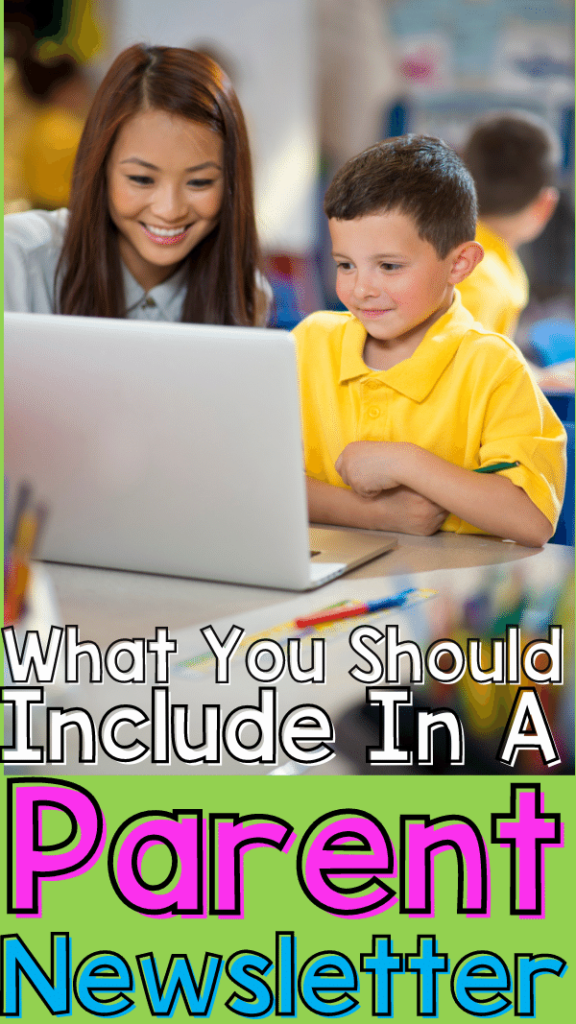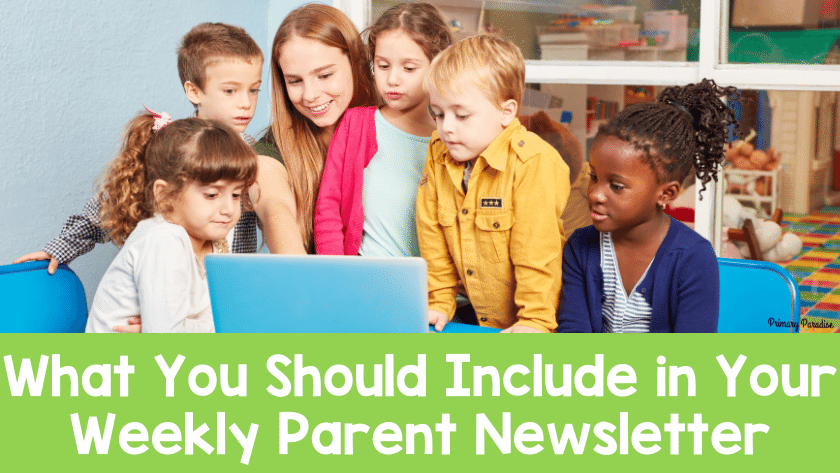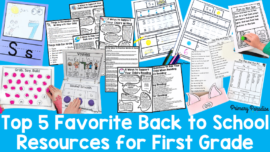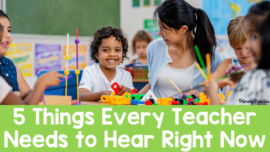If you’re required to send home a weekly newsletter to update parents on your classroom, you might be wondering what to include. Or, if you just want to keep your students’ parents in the loop, you might be trying to figure out what to say. Here are the top things I recommend including in newsletters to parents.
Things to Remember About a Classroom Newsletter
Before we get into what to include in your parent newsletter, here are a few things to keep in mind. A weekly newsletter should be a helpful tool for parents. If it’s not helpful to parents, there’s no point. Here are five things to keep in mind when creating your class newsletter.
1. Keep It Brief
First, parents are busy, just like you. It’s great to give details, but it’s best to keep things as short and sweet as possible. No parent wants to read a 25 paragraph newsletter. Before you start writing, think about what’s most important and focus on that.
2. Emphasize Important Information
It’s great to also make it easier for parents by bolding, underlining, or highlighting important part of your newsletter. This helps those parents who skim it (eh hem- me) see what is most important. However, don’t over do it. If you emphasize every other sentence, it stops helping.
3. Use a Consistent Format
I’ve also found it’s extremely helpful to use a consistent format. This makes it easier for parents to find the information they need. It also makes it much easier to write. I personally use a template that I created in a googledoc. I copy it each week, remove the old info, and add the new. This means I never (well, rarely) forget anything important.
4. Keep It Positive
Sometimes frustrating things come up in the classroom that you need to address in your newsletter. As much as you might want to get your annoyance across, it’s much more effective to keep things positive. For example, instead of lamenting that students have been bringing in cookies and cake and candy for snack, you can instead kindly remind parents what the school snack policy is. Then, offer suggestions of acceptable options. Also, if there’s an issue with just one or two students, email them separately. No one likes to be CCed on an email that is clearly only about 1 or 2 people.
5. Be Kind
Lastly, teachers are busy, but so are parents. I recently saw a conversation in a teacher facebook group. A teacher was frustrated that a parent emailed asking for information that was sent out in the last newsletter. Many of the teachers were telling the teacher to ignore the email and not even respond, passive aggressively resend the original email with FYI, or send the info but lecture the parent about reading the newsletter. This does not sit well with me as both a teacher and a mom.
Listen, I get it. Truly, I do! As teachers, we are working super hard and we have enough on our plates. However, parents are also working hard. Shaming them is the worst way to encourage them to be involved in their child’s education. They might have a few kids, a full time job, and an inbox full of emails. Instead of making a parent feel bad and risk creating unnecessary bad feelings, we can instead be kind and helpful. If a parent emails and asks for info that you’ve already shared, go with something like this. “Hi! Parent teacher conferences are on the 14th. I sent it out in the last newsletter, but I know it can be hard to keep track of things sometimes. Let me know if you have a hard time finding the details, and I’d be happy to resend it. Hope that helps!”
What Should You Include in Your Parent Newsletter
So, now that we know how to write our newsletter, let’s dive into what to include. Here are 5 things to include in your classroom newsletter.
Important Dates and Announcements
The very first thing I always include in my newsletter is a list of important dates and announcements. Sure, parents might have the school calendar, but that doesn’t mean that they realize next Friday is an in-service day. I typically share any important dates or announcements that will take place in the next month. Most things will stay in that area until they take place. This cuts down on the number of emails asking when report cards come out or how long spring break is.
What You Just Learning
We all know children often respond with “nothing” when they’re asked what they’re learning in school. So, the second thing I included is what students have learned and focused on that week. I teach in an IB school, so I include a short paragraph for each subject: ELA, math, and Inquiry (which is transdisciplinary and encompasses social studies, science, and more).
I also create a google photos folder to share pictures of our learning with parents. Because I live in Europe where I need to be very aware of privacy issues due to GDPR, I never share faces and these photos are only for parents.
I have been told by a number of parents how much they love to hear about and see what their children are learning. It also feels really good to write about what we’ve done at the end of each week. It often helps me realize just how much growth and learning has taken place. And, it helps me reflect on what worked, what didn’t and what I need to reteach as I write.
What You’re Learning Next
It is also helpful to include a little bit about what you’re teaching next week. I typically send out my classroom newsletter email on Friday. Sometimes my students come in on Monday and tell me “My mom and I researched space this weekend since we’re learning about it this week!” How great is that?
Links and Learning Tips
Another thing that parents have told me is super helpful in my classroom newsletter is when I share links and resources to support our learning at home. I often share videos that we’ve watched in class for phonics sounds, science concepts, or other things the kids were interested in. Sometimes I’ll share links to websites and games that they can check out at home. And lastly, when we’re learning a new spelling pattern or concept, I will give tips or tricks to help them understand how to support their child at home. For example, if we’re learning about place value, I’ll briefly explain (often with a picture) what units and tens are. This cuts down on parents being confused by “new math” or helps them understand how to support their child when they’re reading and writing a new sound or sight words.
Homework description
Although I am not a big fan of homework, I am currently required to give it to my students. (Which makes me a big, ol’ liar.) So, I make sure to explain the homework in my newsletter.
So there you have it: what to include in a parent weekly newsletter! That’s how I set up my classroom newsletter, and so far it’s worked fairly well for all involved. My parents are happy and informed, and I can use a template to make it a little easier on myself.
What to Do Instead of Guided Reading
5 Ways to Help Parents Support Their Children in Science
Start the Year Off Right By Giving Students the Power to Choose
How to Teach Narrative Writing (and a free template)




